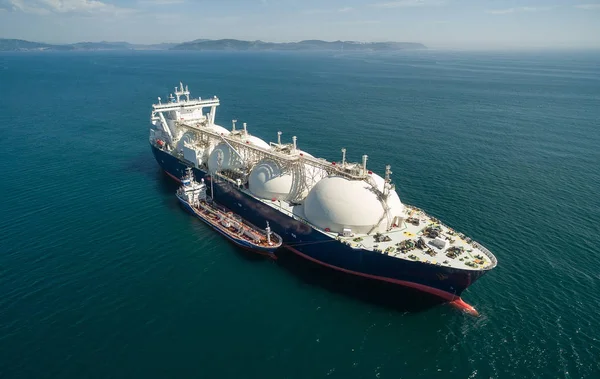A significant shift in the global energy landscape is on the horizon, with the largest surge in liquified natural gas (LNG) supply set to transform markets. This influx, predicted by RBC Capital Markets, is poised to create substantial opportunities for discerning investors, including private individuals, high-net-worth individuals (HNWIs), and ultra-high-net-worth individuals (UHNWIs). The ramifications of this supply wave are expected to extend far beyond previous expansions, offering a timely chance to engage with a vital sector of the global economy.
The New LNG Supply Surge
According to RBC analysts, led by Anan Dhanani, the LNG market will enter a period of significant oversupply by the end of 2026, persisting until 2030. This glut is expected to suppress prices to potentially below double digits, creating an environment rich in opportunity for those looking to strategically position themselves within the energy market. Investors who can navigate this evolving landscape could benefit from the substantial shifts ahead.
At the heart of this growth is the rapid increase in liquefaction capacity, set to expand by 50% before the decade is out. The United States and Qatar will remain the dominant players, together controlling nearly 50% of the global LNG supply by 2030. This presents an attractive scenario for those looking to invest in regions or sectors linked to these key suppliers, such as infrastructure or energy transport.
Strategic Market Impacts
The impending LNG supply surge is not only about quantity; it will fundamentally alter how gas markets interact on a global scale. Since the Russia-Ukraine conflict, regional gas markets have become more interconnected than ever, amplifying the effects of this new wave of supply. European demand, which was previously reliant on Russian pipeline gas, is now being met increasingly by LNG, signalling a permanent shift in the region’s energy strategy. However, questions remain about whether global demand, especially in Asia, will rise fast enough to absorb the impending supply deluge.
Asia-Pacific, already the largest importer of LNG, is projected to grow its demand by 5% annually. This demand will be driven primarily by China, India, and South Korea—offering a clear path for those seeking to diversify their investment portfolios towards regions showing consistent growth. However, with such demand growth potentially insufficient to absorb the scale of supply, a cautious yet opportunistic investment approach is advised.
Price Pressure and Market Sentiment
Currently, futures for Dutch TTF, the benchmark for natural gas in Europe, are trading at $12.78 per mmbtu, but RBC forecasts that prices may drop further as new supply floods the market. With oversupply looming, LNG providers are expected to focus more on shipping utilisation over arbitrage, a trend that could offer long-term stability for the shipping sector as well as for investors seeking predictable returns from shipping-linked assets.
While the immediate outlook may appear bearish due to concerns of oversupply, this is exactly the type of market where savvy investors find opportunity. As oversupply weighs on prices, those with a long-term vision can enter at a point of value, positioning themselves to reap rewards when the market inevitably balances.
Geopolitical and Environmental Considerations
It’s worth noting that the LNG market remains resilient in the face of global geopolitical tensions. Despite concerns over energy security—particularly with the 2024 expiry of Russian gas contracts to Europe via Ukraine—the LNG market has remained “surprisingly quiet,” as noted by Meg O’Neill, CEO of Woodside Energy. This stability underscores the growing confidence in global LNG supply chains, providing reassurance to investors seeking long-term security amidst geopolitical uncertainty.
Yet, this calm may not last indefinitely. The International Energy Agency (IEA) has cautioned that the expiration of these contracts could require Europe to import higher volumes of LNG, potentially tightening the global gas market once again. For investors, this volatility presents both risk and reward. Those who understand the ebb and flow of supply and demand in the energy sector will find themselves well-positioned to navigate the complexities of the market.
An Era of Opportunity
For private investors, HNWIs, and UHNWIs, the coming tidal wave of LNG supply offers a unique moment to capitalise on both short-term price pressures and long-term market shifts. As the market becomes oversupplied and prices fall, there are significant opportunities to secure assets at a discount, anticipating future price stabilisation and growth. The expansion of LNG infrastructure, especially in leading markets like the US, Qatar, and Asia-Pacific, also opens doors for strategic investments in energy infrastructure, logistics, and technology.
Now, more than ever is the time to consider how this transformative phase in global energy markets can align with your investment strategies. By staying ahead of these changes, investors can position themselves to take advantage of the next great wave in energy.








Recent Comments